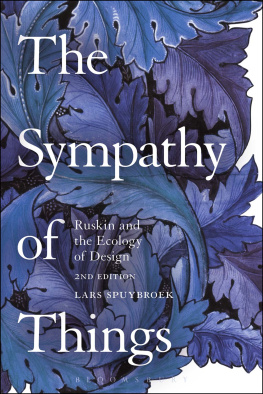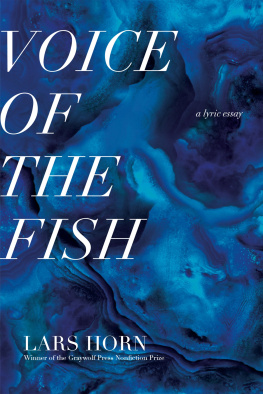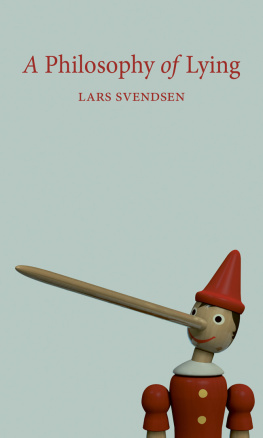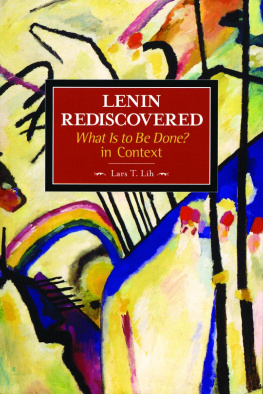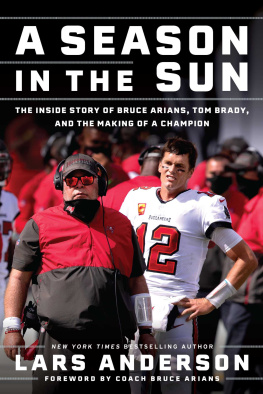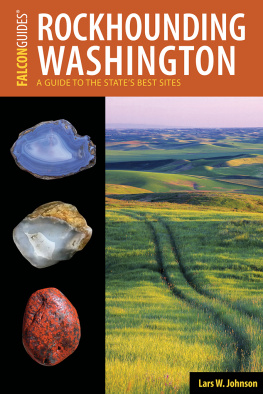Lars Spuybroek - The Sympathy of Things
Here you can read online Lars Spuybroek - The Sympathy of Things full text of the book (entire story) in english for free. Download pdf and epub, get meaning, cover and reviews about this ebook. year: 2016, publisher: Bloomsbury UK, genre: Romance novel. Description of the work, (preface) as well as reviews are available. Best literature library LitArk.com created for fans of good reading and offers a wide selection of genres:
Romance novel
Science fiction
Adventure
Detective
Science
History
Home and family
Prose
Art
Politics
Computer
Non-fiction
Religion
Business
Children
Humor
Choose a favorite category and find really read worthwhile books. Enjoy immersion in the world of imagination, feel the emotions of the characters or learn something new for yourself, make an fascinating discovery.
- Book:The Sympathy of Things
- Author:
- Publisher:Bloomsbury UK
- Genre:
- Year:2016
- Rating:3 / 5
- Favourites:Add to favourites
- Your mark:
- 60
- 1
- 2
- 3
- 4
- 5
The Sympathy of Things: summary, description and annotation
We offer to read an annotation, description, summary or preface (depends on what the author of the book "The Sympathy of Things" wrote himself). If you haven't found the necessary information about the book — write in the comments, we will try to find it.
The Sympathy of Things — read online for free the complete book (whole text) full work
Below is the text of the book, divided by pages. System saving the place of the last page read, allows you to conveniently read the book "The Sympathy of Things" online for free, without having to search again every time where you left off. Put a bookmark, and you can go to the page where you finished reading at any time.
Font size:
Interval:
Bookmark:
To J.B.
John Ruskin did not like machines. He thought that mechanical machines make everything look the same. Lars Spuybroek, a protagonist of the digital turn in architecture, and a scholar, shows that todays digital tools vindicate John Ruskins plea for the animation of artisan making. This book offers an anticipation of our technological future, as well as an understanding of our pre-mechanical past.
MARIO CARPO, Reyner Banham Professor of Architectural History and Theory, The Bartlett, UCL, UK
If Spuybroek, like Ruskin, does not shake your design and aesthetic concepts, you havent understood him.
CHARLES JENCKS
The Sympathy of Things is a stirring call to action; an amazing reconstruction of the ideas of the Victorian sage John Ruskin; and, above all, a visionary look at the inner life of things. Lars Spuybroek makes the case that aesthetics is first philosophy, and proposes a radical new aesthetics for the digital age.
STEVEN SHAVIRO, DeRoy Professor of English, Wayne State University, US
the term brilliant is often misused in reviews, but the opening chapter on the digital nature of gothic is truly scintillating.
STEPHEN KITE, Architectural Research Quarterly
This is a dazzling, provocative, baffling, and sometimes vexing manifesto . The Sympathy of Things is an unforgettable book.
FRANCIS OGORMAN, Carlyle Studies Annual
Ruskin has at last found an interpreter with the breadth of learning and a poetic imagination to make his perceptions relevant to our own day.
PETER DAVEY, Architectural Review
A must for digitized Ruskinites everywhere.
BRUCE STERLING, WIRED Magazine

John Ruskin. Ornaments from Rouen, St. L, and Venice. Plate I from The Seven Lamps of Architecture, 1880 edition (engraving by R. P. Cuff), orig. 1849.
John Ruskin. Plans of Piers. Plate II from The Stones of Venice, Vol. 1: Foundations, 1851 (engraving by R. P. Cuff). Works, IX: f.p.130, r.
Second initial page of the Gospel of Matthew, or the Chi Rho page from the Lindisfarne Gospels (680720 AD), folio 29. British Library Board, Cotton Nero D. IV, f.29.
John Ruskin. South-West Porch of St. Wulfran, Abbeville, 1848. Graphite on paper. 32.5 15 cm. Private Collection.
John Everett Millais. Design for a Gothic window, 1853. Charcoal, gouache and watercolor on paper. 213 277 cm. Private Collection.
John Ruskin. Detail showing the St. L finial from Plate I in The Seven Lamps of Architecture, 1880 edition (engraving by R. P. Cuff), orig. 1849.
Gloucester Cathedral, view of the south cloisters (1351). Photo by the author.
Eugne Viollet-le-Duc. One of the exemplary iron-masonry structures from Entretiens sur larchitecture (Paris, 1863).
John Ruskin. The Cervin, from the East, and North-East. Plate 38 from Modern Painters, Vol. IV, Part V: Of Mountain Beauty (engraving by J. C. Armytage), 1856.
John Everett Millais. Mariana, 1851. Oil on wood. 59.7 49.5 cm. Tate Gallery, London.
Owen Jones. Female Head from New Zealand, in the Museum, Chester. Ill. on p. 14 from The Grammar of Ornament (London: Day and Son, 1856).
Owen Jones. Savage Tribes No 3. Plate III from The Grammar of Ornament (London: Day and Son, 1856).
Owen Jones. Moresque No 5. Plate XLIII from The Grammar of Ornament (London: Day and Son, 1856).
John Ruskin. Abstract Lines. Plate VII from The Stones of Venice, Vol. 1: Foundations, 1851. Works, IX: f.p.268, r.
John Starkie Gardner. Hingework at Montral, Yonne. Fig. 26 from Ironwork, Part I (London: Chapman and Hall, 1893).
Detail of hingework at Salisbury Cathedral (mid-thirteenth century). Photo by the author.
J. H. Dearle for Morris & Co. Design for the Golden Lily wallpaper, 1897. Watercolor, graphite and ink on paper. 34.3 27.3 cm. Courtesy of the Huntington Art Collections.
William Morris for Morris & Co. Acanthus wallpaper (1875). Digitally reworked image from Victoria and Albert Museum, London.
tienne-Jules Marey. Chronomatography of a running horse (1885). Collge de France, Paris.
tienne-Jules Marey. Analysis according to the graphic method of the chronomatography of a running horse (1885). Collge de France, Paris.
J. H. Dearle and William Morris for Morris & Co. Bullerswood carpet, 1889. Hand-knotted with woolen pile on a cotton warp. Victoria and Albert Museum, London.
Eugne Viollet-le-Duc. Modifications apportes un sommet. Fig 36bis from Le Massif du Mont Blanc (Paris: Baudry, 1876).
Eugne Viollet-le-Duc. Salle Voute, fer et maonnerie. Plate 18 from the twelfth lecture in Entretiens sur larchitecture (Paris, 1864).
Shoowa Kuba cloths with examples from loop (top row), woot (middle row), and cross (bottom row) patterns (twentieth century). Approx. 53 53 cm. Cut-pile embroidered raffia, natural dyes. Photos by the author.
Titian. Venus of Urbino, 1538. Oil on canvas. 119 165 cm. Uffizi Museum, Florence.
Yves Klein. Performance of Pinceaux-vivants on June 5, 1958, that produced the series of paintings titled Antropomtries. 9, rue Le Regrattier, Ile Saint-Louis, Paris, France. Yves Klein, ADAGP, Paris, DACS, London, 2015. Photo all rights reserved.
John Ruskin. Moss and Wild Strawberry, 1873. Graphite and traces of bodycolor on gray-blue paper. 54.1 37.6 cm. WA.RS.REF.090 The Ashmolean Museum, University of Oxford.
Alfred Parsons. Colonies of Poets Narcissus and Broad-Leaved Saxifrage. Illustration on p. 93 from William Robinson, The Wild Garden (London: John Murray, 1870).
Alfred Parsons. Cheddar Pink, Saxifrage, And Ferns, on cottage wall at Mells, Somerset. Illustration on p. 115 from William Robinson, The Wild Garden (London: John Murray, 1870).
Alfred Parsons. Tiger Lilies in Wild Garden at Great Tew. Illustration on p. 135 from William Robinson, The Wild Garden (London: John Murray, 1870).
John Ruskin. Mountain-cottage diagram. Fig. 30 from Modern Painters, Vol. IV, Part V: Of Mountain Beauty, 1856. Works, XI: 223.
Robert Kretschmer and Alfred Brehm. Paradisea rubra, male. Fig. 47 from Charles Darwin, The Descent of Man, and Selection in Relation to Sex, Vol. 2. (London: John Murray, 1871).
Robert Kretschmer and Alfred Brehm. Spathura underwoodi, male and female. Fig. 49 from Charles Darwin, The Descent of Man, and Selection in Relation to Sex, Vol. 2. (London: John Murray, 1871).
Second Edition
The well-known phrase revised and expanded edition is slightly misleading, since even when unattended most words revise themselves over time, and most books tend to expand, especially when used in lectures, seminars, and discussions. True revision would require another book; therefore, I have refrained from inserting any new insights, limiting the changes to clarifications and the smoothing out of transitions. Expansion is already an important characteristic of the first edition of 2011 (published by V2_ in Rotterdam), with its long chapters and cumulative argumentation. For this second edition, I have chosen to add even more examples and citations from the most important protagonists. From the outset the book was meant to be mosaic in character and, above all, not governed by a single discipline, littered with imagery, and using a structure in which words and things alternate in a completely equal relationship. The development of a thought may break off halfway through to be taken over by the description of a thing, and a thing may quickly give way to an exposition of logic, often making an argument that starts out as a classic exegesis and ends up as formal as programming language. In one section in the book, we move from William Morriss rugs to a differentiation between empathy and sympathy, become engaged in a discussionwhich never happenedbetween Ruskin and Viollet-le-Duc on the geometrical aspects of mountains, and move back to Lippss and Worringers differentiation of abstraction and empathy before ending in a formal discussion of angular figures in Shoowa Kuba clothsall in the space of about ten pages. It might be the designers way of thinking that allows for such trains of thought. In a designers mind, things and words are wholly on a par with each other: reasoning is constantly augmented with quickly sketched diagrams, the pointing at imaginary objects, the use of three-dimensional models, the constant opening of books, and the xeroxing of images that end up pinned on the wall. As a result, the chapters take on the form of extensive maps with paths that lead into many directions and connect to many disciplines.
Next pageFont size:
Interval:
Bookmark:
Similar books «The Sympathy of Things»
Look at similar books to The Sympathy of Things. We have selected literature similar in name and meaning in the hope of providing readers with more options to find new, interesting, not yet read works.
Discussion, reviews of the book The Sympathy of Things and just readers' own opinions. Leave your comments, write what you think about the work, its meaning or the main characters. Specify what exactly you liked and what you didn't like, and why you think so.

